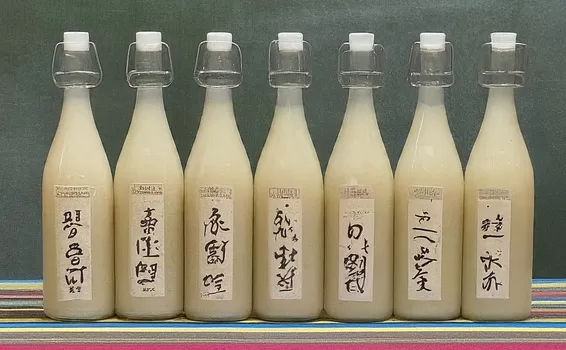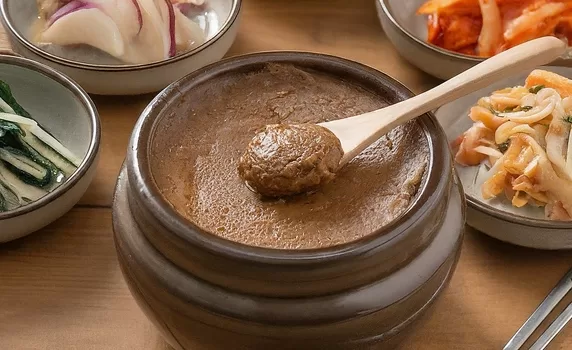Makgeolli is a traditional Korean rice wine known for its slightly sweet, milky, and effervescent qualities. It is made from fermented rice, water, and nuruk (a fermentation starter). Making makgeolli at home is a fascinating process that results in a refreshing, probiotic-rich beverage. Here’s our traditional Korean makgeolli recipe.
Our Traditional Makgeolli Recipe (Korean Rice Wine) continues after this advertisement:
Traditional Makgeolli Recipe (Korean Rice Wine)
Ingredients:
- 4 cups sweet rice (glutinous rice)
- 1 cup nuruk (Korean fermentation starter)
- 8 cups water (filtered or spring water)
- 1/2 cup sugar (optional, for additional sweetness)
Instructions:
Prepare the Rice:
- Rinse the sweet rice several times under cold water until the water runs clear. This helps to remove excess starch.
- Soak the rice in plenty of water for at least 4 hours or overnight.
Steam the Rice:
- Drain the soaked rice and steam it in a rice cooker or a steamer lined with cheesecloth for about 40 minutes until the rice is fully cooked and soft. Allow the steamed rice to cool to room temperature.
Prepare the Fermentation Starter:
- In a large, clean bowl or fermentation vessel, combine the cooled steamed rice with the nuruk. Mix well to ensure the rice is evenly coated with the nuruk.
- Add 8 cups of filtered or spring water to the rice mixture. Stir thoroughly to combine. If desired, add 1/2 cup of sugar to the mixture for additional sweetness.
Fermentation Process:
- Cover the bowl or vessel with a clean cloth or cheesecloth, securing it with a rubber band or string to allow air to circulate while keeping out dust and insects.
- Place the bowl in a warm, dark place with a consistent temperature of around 20-25°C (68-77°F) for about 3-5 days. Stir the mixture once a day with a clean spoon to promote even fermentation.
Straining the Makgeolli:
- After 3-5 days, the mixture should have a sweet, tangy aroma and small bubbles indicating active fermentation. Strain the mixture through a fine mesh strainer or cheesecloth into a clean bowl to separate the liquid from the rice solids.
- Gently press the solids to extract as much liquid as possible without crushing the rice too much, which can make the makgeolli gritty.
Bottling:
- Transfer the strained makgeolli into clean, airtight bottles. Leave some space at the top of each bottle to allow for natural carbonation during the secondary fermentation.
- Seal the bottles tightly and store them in the refrigerator for an additional 1-2 days to develop a slight effervescence.
Serving:
Before serving, gently shake the bottle to mix the sediment that has settled at the bottom. Pour the makgeolli into a cup or bowl and enjoy it chilled.
Tips:
- Use high-quality, filtered or spring water to ensure the best flavor and fermentation results.
- Maintain a consistent fermentation temperature to achieve optimal fermentation and flavor.
- Adjust the fermentation time based on your taste preference. A longer fermentation will result in a more pronounced tangy flavor.
- Always use clean utensils and containers to avoid contamination during the fermentation process.
Enjoying Makgeolli:
Makgeolli pairs wonderfully with a variety of Korean dishes such as jeon (Korean pancakes), kimchi, and grilled meats. Its light, refreshing taste and natural carbonation make it a perfect beverage for social gatherings and traditional Korean meals.
Enjoy your homemade makgeolli as a unique and delightful addition to your culinary repertoire!
Chae: Korean slow food for a better life Hardcover, 2024 is available from Amazon

Related stories
Traditional Doenjang Recipe (Korean Fermented Soybean Paste)
Chinese Restaurant Syndrome – is MSG safe?
Recipe for popular Korean dish Gimbap
Australia’s best tasting heirloom tomatoes
Delicious and Easy Air Fryer Recipes
A True History of Vegemite, manna from Heaven
Global Food Production Dilemma: Grow & Buy Local
Lunar Agriculture: Plants to be Grown on the Moon
Should You Buy at Farmer’s Markets or Supermarkets?
Are Salt and Pepper Shakers collectible? What to look for
What to look for when collecting Egg Cups



